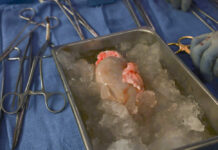What is a Tie rod?
The tie rod is part of the steering system. The steering system in some large SUVs, trucks and older cars has a ball rotation mechanism. Hyundai cars are equipped with rack and pinion steering systems. The tie rods of both systems have the same function: they hook the rack or connect the rod to the steering knuckle.
Let’s look at the principle of operation of the tie rod in the rack and pinion steering system: the steering rack is attached to the body, frame, or subframe. Fix the steering wheel of the front wheel. When the driver turns the steering wheel, the rack slides and the steering bar rotates the steering wheel in the desired direction.
Components of Tie rod
The tie rod consists of two parts: the end of the inner rod and the end of the outer rod. Both ends of the tie rod have ball joints. The end of the inner bar is coated with grease and protected by a rack. The end of the outer tie rod is also filled with grease but protected by a protective rubber or plastic cover. The most common problem with end hooks is when they are worn and loose. This usually happens when rubber boots are cracked or broken and moisture gets into the end of the tie rod and causes corrosion. The outer bar end often fails. Due to the increased load, the connecting rod end problem is more common in heavier cars and SUVs.
A loose tire rod is a major safety concern because it can be detached. If the tie rod end is removed, the car loses control of the steering wheel. If you see a broken-down vehicle with the front wheels sideways in different directions, the end of one of the tie rods can be removed.
The principle of operation of the tie rod
The tie rod is essential to your driving system. In other words, without the tie rod, your car will not be able to drive. As a pivot point between the rack, the steering arm, and the steering wheel, the tie rod not only helps the wheels move during rotation but also allows the steering wheel.
Although the rack and pinion system and the rollerball system work in different ways, both systems use tie rods to connect the rack to the steering arm and the steering arm to the steering wheel.
Also read , 8171 check online
Symptoms of bad tie rod
The tie rod is a very important part of the suspension and steering components. Due to repeated wear, the tie rod and tie rod end may need to be replaced to ensure safety and movement. It is very important to check for wear on the tie rods and tie rod ends, as defective tie rods/tie rods can cause fatal injury to the driver and vehicle.
Some of the signs that the tie rod end needs to be replaced are as follows: –
1. The front is aligned and closed
‘One of the main functions of the tie rod end is to hold equipment in front of the vehicle. The end of the tie rod is attached to other parts of the suspension and steering system, such as connecting rods, ball joints, wheels, wheels, stabilizer connections, etc., which help maintain the balance and alignment of all these parts. If the wheel alignment is incorrect or the car cannot be straightened, the bar end may need to be replaced.
2. The steering wheel is shaking or is loose
If the steering wheel vibrates or is too slow, the problem may be with the end of the lever. When the end of the tie rod is worn, it starts to jump and there is space or slack. This slack or delay causes the conductor to vibrate or pull.
3. Rough and excessive tire wear
Due to vibration or skipping due to a failure at the tie rod end, the tire is torn too much in and out of the tire. It is very important for the mechanic to check the wheels and replace the shaft ends if necessary.

























